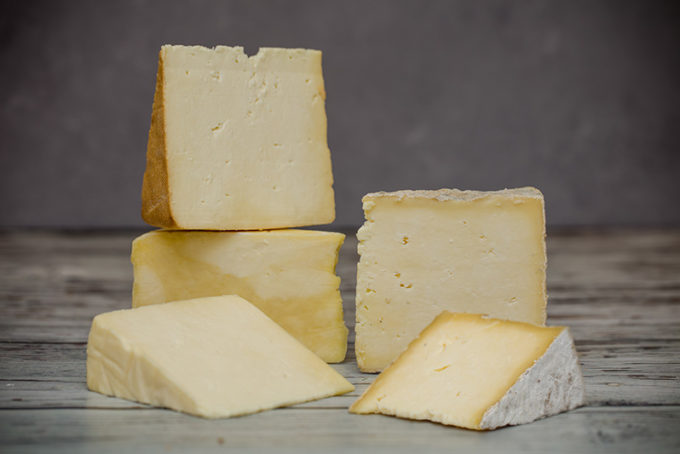Originally produced on plantations outside Cardiff in Wales to consume excess milk, Caerphilly, spelt Caerffili earned an online reputation as the preferred cheese of the local coal miners. The miners commonly brought cheese down into the mines with them while they worked, wrapping cheese in a cabbage fallen leave to secure it.
It’s stated that the miners preferred Caerphilly as a result of its thick, durable rind; its salt content, which replaced much-needed electrolytes the miners lost while sweating in the mines; as well as its greater moisture content, which maintained it from drying. The miners additionally erroneously believed that the cheese absorbed toxins in the air underground.
If you need to buy Snowdonia Cheese, please click on the link.
Unlike industrial selections, conventional Caerphilly has a supple texture more similar to a Brie-style cheese, than aged cheese. Underneath the natural grey rind of each wheel is a layer of this velvety, softer-textured paste, with a lighter-coloured, chalkier section of the paste in the centre. The tastes vary from lemony to barnyard or mushroom more intricate, as well as tasty than the mass-produced variations.
As cheesemaking started to industrialize and consolidate into manufacturing facility manufacturing in the U.K. in the early 20th century, several farm producers of Caerphilly were shed. At the beginning of World War II, the British federal government mandated that just hard cheeses could be generated in an effort to use the country’s milk books purposefully. Unfortunately, this suggested Caerphilly was produced less, as well as less.
How Caerphilly is Made?
Entire milk, sterilized or raw, is warmed carefully, and then starter cultures are added to start fermentation and reduced the pH of the milk by converting lactic acid to lactose. The rennet is added, and the milk is permitted to coagulate right into a solid, yet lively, curd.
The curds are cut into tiny cubes, then delicately heated, as well as mixed, to get rid of whey and firm up the curds. The whey is drained off, and then the curds are cut into stacked, pieces, and turned a few times to aid to push out more whey. At this moment, the curds are broken into little items and combined with salt before being ringed into plastic cheese kinds lined with cheesecloth.
The cheese is then pushed to tighten the wheels, as well as get rid of more wetness, either with weights or with a press. The cheesecloth and kind are got rid of, the rind is salted, as well as the wheels are allowed to air completely dry so that the peel can begin to create. The approximately 10-pound wheels are matured for as much as 10 weeks prior to being packaged, as well as marketed.

 Why Kids Love Eating at BBQ Restaurants Near Me More Than Chains
Why Kids Love Eating at BBQ Restaurants Near Me More Than Chains  Experience Italian Fine Dining Infused With Creativity, Tradition, And Seasonal Freshness
Experience Italian Fine Dining Infused With Creativity, Tradition, And Seasonal Freshness  Do regional ingredients truly make a difference in authentic cuisine?
Do regional ingredients truly make a difference in authentic cuisine?  Top 5 Healthy Ingredients to Find in Your Meal Prep Service
Top 5 Healthy Ingredients to Find in Your Meal Prep Service  Elegant Wine and Champagne Gift Baskets for Life’s Milestone Moments
Elegant Wine and Champagne Gift Baskets for Life’s Milestone Moments  The Sweet Revelation: Discovering the Delicate Treasure of Northern Waters
The Sweet Revelation: Discovering the Delicate Treasure of Northern Waters  How Cold Rooms Improve Food Storage and Preservation in Restaurants
How Cold Rooms Improve Food Storage and Preservation in Restaurants  Creative Ways to Enjoy and Buy Chocolate Dipped Pretzel Rod Online
Creative Ways to Enjoy and Buy Chocolate Dipped Pretzel Rod Online  Gluten Free Baking to Bring in the New Year
Gluten Free Baking to Bring in the New Year 